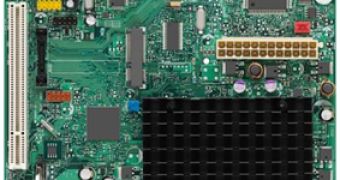January may bring with it a Home Server running on Intel's Atom D510 central processing unit. The CPU is a dual-core 1.66GHz processor that runs at a voltage of just 13W and is believed to overcome the capabilities of the Atom 330, which eats up an additional 5W.
Although no details have been given on this issue, it seems more and more likely that Tranquil PC will pull off such an early release. According to the company's blog, its MiDASS Home Server unit is to be built off the Intel Atom “PineView” D510 processor in conjunction with the NM10 chipset. Although more information is unlikely to become available any time soon, the blog does provide a few materials on this highly anticipated, new model.
The system will be equipped with 2x 1.66GHz CPUs. They will boast no less than an impressive 2x 512K cache, support for the hyper threading technology and a TDP of 13W. The low thermal design point implies that the unit will be passively cooled, as long as a suitable air flow is provided.
The platform itself seems to be a significant improvement, compared with the current top-end Atoms. It is quite uncannily designed, especially in regard to the north bridge, which is on the same silicon as the CPUs. This will significantly improve the performance already optimized by the 2x hyper threaded 1.66GHz units.
The board, dubbed the new D510MO, is a neat and tidy Mini-ITX board. It is outfitted with two single channel DDR2 800/667 MHz, for a maximum of 4GB, has an integrated GMA 3150 graphics (based on the G31 core) capable of a maximum resolution of 2048×1536. For expandability, it comes with two SATA II ports (3GB/s), eight USB 2.0 ports, out of which four are external ports, two come via headers, one is for the PCIe Mini Card and the remaining one is meant for a flash card/SSD. The main board also features one PCI and one PCIe mini slot and legacy I/O features, including PS/2, two serial headers and a parallel header.
The board will have a mini ITX or uATX-compatible form factor with a passive cooling solution allowed by the low TDP already mentioned.

 14 DAY TRIAL //
14 DAY TRIAL //